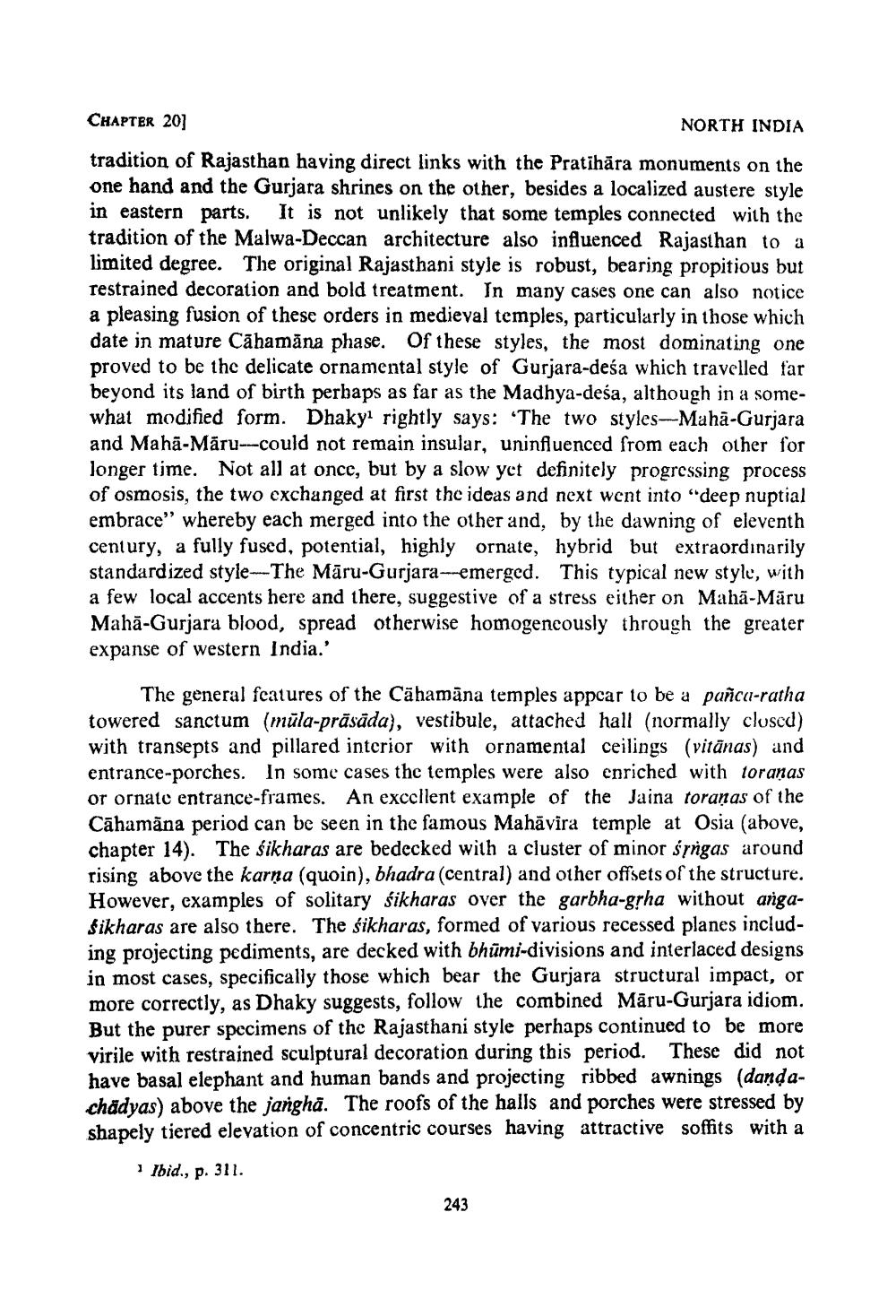________________
CHAPTER 20]
NORTH INDIA tradition of Rajasthan having direct links with the Pratihāra monuments on the one hand and the Gurjara shrines on the other, besides a localized austere style in eastern parts. It is not unlikely that some temples connected with the tradition of the Malwa-Deccan architecture also influenced Rajasthan to a limited degree. The original Rajasthani style is robust, bearing propitious but restrained decoration and bold treatment. In many cases one can also notice a pleasing fusion of these orders in medieval temples, particularly in those which date in mature Cāhamāna phase. Of these styles, the most dominating one proved to be the delicate ornamental style of Gurjara-desa which travelled far beyond its land of birth perhaps as far as the Madhya-deśa, although in a somewhat modified form. Dhakyı rightly says: 'The two styles-Mahā-Gurjara and Mahā-Māru--could not remain insular, uninfluenced from each other for longer time. Not all at once, but by a slow yet definitely progressing process of osmosis, the two exchanged at first the ideas and next went into "deep nuptial embrace" whereby each merged into the other and, by the dawning of eleventh century, a fully fuscd, potential, highly ornate, hybrid but extraordinarily standardized style-The Māru-Gurjara---emerged. This typical new style, with a few local accents here and there, suggestive of a stress either on Mahā-Māru Mahā-Gurjara blood, spread otherwise homogencously through the greater expanse of western India.'
The general features of the Cāhamāna temples appcar to be a pañca-ratha towered sanctum (mūla-prāsāda), vestibule, attached hall (normally closed) with transepts and pillared interior with ornamental ceilings (vitānas) and entrance-porches. In some cases the temples were also cnriched with toranas or ornate entrance-frames. An excellent example of the Jaina toraņas of the Cāhamāna period can be seen in the famous Mahävira temple at Osia (above, chapter 14). The sikharas are bedecked with a cluster of minor śrrgas around rising above the karna (quoin), bhadra (central) and other offsets of the structure. However, examples of solitary śikharas over the garbha-grha without angaSikharas are also there. The śikharas, formed of various recessed planes including projecting pediments, are decked with bhūmi-divisions and interlaced designs in most cases, specifically those which bear the Gurjara structural impact, or more correctly, as Dhaky suggests, follow the combined Māru-Gurjara idiom. But the purer specimens of the Rajasthani style perhaps continued to be more virile with restrained sculptural decoration during this period. These did not have basal elephant and human bands and projecting ribbed awnings (dandachädyas) above the janghā. The roofs of the halls and porches were stressed by shapely tiered elevation of concentric courses having attractive soffits with a
1 lbid., p. 311.
243




